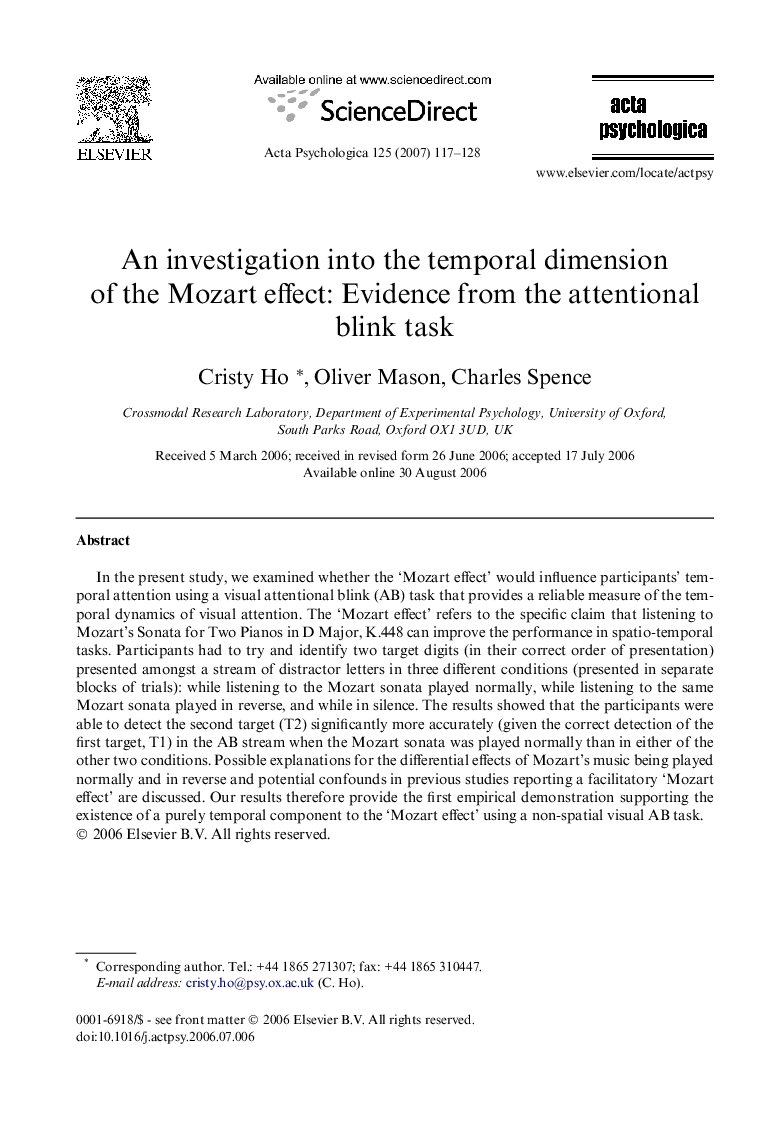| Article ID | Journal | Published Year | Pages | File Type |
|---|---|---|---|---|
| 920574 | Acta Psychologica | 2007 | 12 Pages |
In the present study, we examined whether the ‘Mozart effect’ would influence participants’ temporal attention using a visual attentional blink (AB) task that provides a reliable measure of the temporal dynamics of visual attention. The ‘Mozart effect’ refers to the specific claim that listening to Mozart’s Sonata for Two Pianos in D Major, K.448 can improve the performance in spatio-temporal tasks. Participants had to try and identify two target digits (in their correct order of presentation) presented amongst a stream of distractor letters in three different conditions (presented in separate blocks of trials): while listening to the Mozart sonata played normally, while listening to the same Mozart sonata played in reverse, and while in silence. The results showed that the participants were able to detect the second target (T2) significantly more accurately (given the correct detection of the first target, T1) in the AB stream when the Mozart sonata was played normally than in either of the other two conditions. Possible explanations for the differential effects of Mozart’s music being played normally and in reverse and potential confounds in previous studies reporting a facilitatory ‘Mozart effect’ are discussed. Our results therefore provide the first empirical demonstration supporting the existence of a purely temporal component to the ‘Mozart effect’ using a non-spatial visual AB task.
